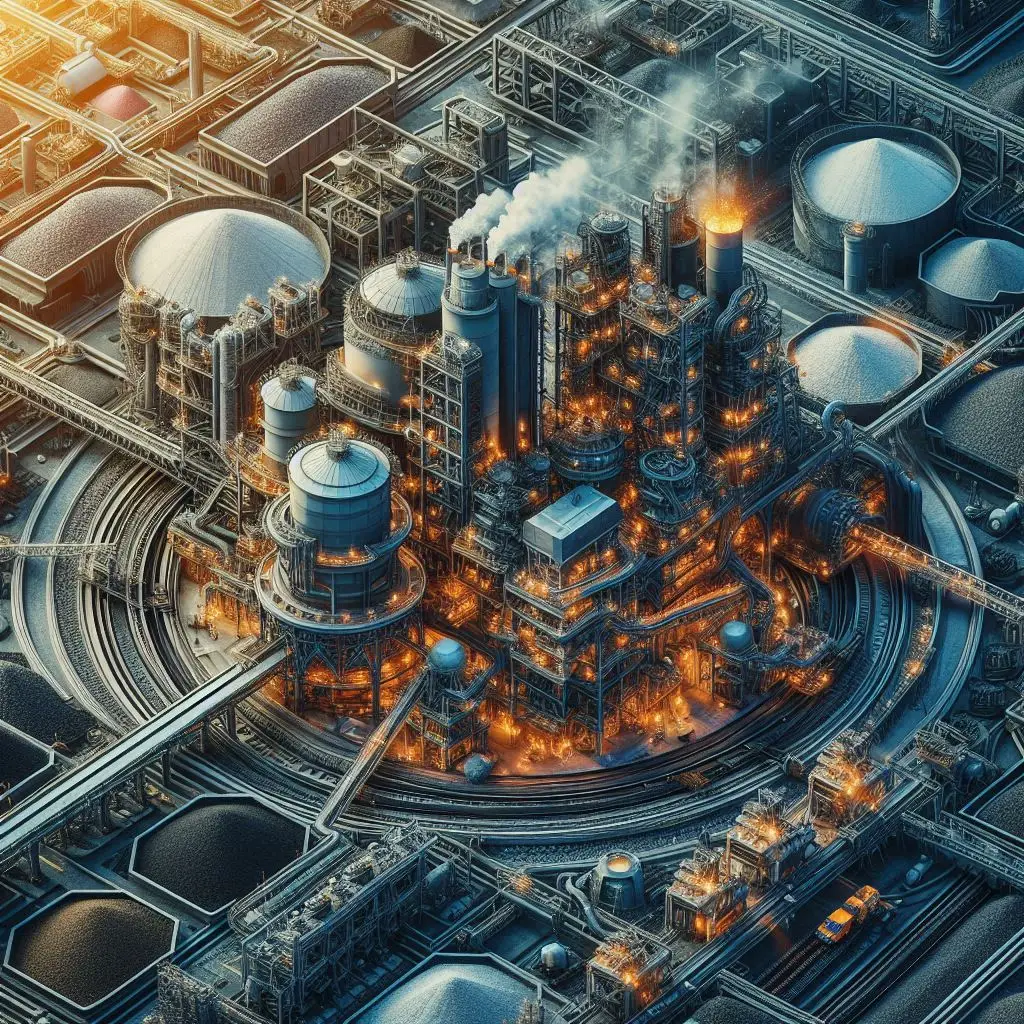
How is calcined petroleum coke made
In this comprehensive guide, how is calcined petroleum coke made, I'll go over how calcined petroleum coke is made, its characteristics, and its many industrial applications before coming to a conclusion that summarizes its importance.
A specific industrial technique is used to manufacture the valuable carbonaceous substance known as calcined petroleum coke. The process starts with the choice of green petroleum coke, which is then pre-treated to get rid of contaminants like sulfur and volatile chemicals. The core of the manufacturing process is calcination, which involves heating the pre-treated GPC in a controlled atmosphere to remove volatile materials and raise carbon content.
The technique of calcination that is chosen, such as the rotary kiln process, allows for exact control of temperature and residence time, enabling the customization of physical attributes to satisfy the varying demands of various industries. The product is further treated after calcination to get the desired particle size and properties.
Quality control procedures are used throughout the whole manufacturing process to guarantee that the final calcined petroleum coke product complies with client requirements and industry standards. Aluminum manufacturing is one of its main uses, and the creation of CPC is a crucial stage in many industrial processes.
Petroleum coke that has been calcined is a crucial substance with several industrial applications, chief among them the manufacturing of aluminum. To produce a high-quality carbon product, its manufacturing method includes the careful selection of raw materials, pre-treatment, calcination, and post-processing. To guarantee a constant level of product quality, quality control methods are in place. The importance of CPC is seen in its function as a crucial element in several industrial processes and in its contribution to the creation of necessary elements like aluminum.
A vital raw ingredient utilized in several industrial processes, notably in the manufacturing of aluminum, is calcined petroleum coke, or CPC for short. It is made by heating green petroleum coke to eliminate volatile chemicals and moisture, producing a highly carbonaceous substance with a variety of uses.
Introduction:
High-purity carbon is produced by calcining petroleum coke, a by-product of the petroleum industry. It is produced via a multi-step process that turns inferior basic materials into a useful industrial resource. CPC is primarily utilized as an anode material in the manufacturing of aluminum, which is its main usage. We must examine the manufacturing procedure in detail if we are to comprehend how calcined petroleum coke is manufactured.
Raw Material Choice:
Green petroleum coke (GPC), which is the initial stage in the manufacturing of CPC, is chosen as the raw material. Although it has a high carbon content and is a byproduct of the oil refining process, GPC also includes contaminants such sulfur, metals, and volatile chemicals. For high-quality calcined coke to be produced, these impurities must be eliminated.
Green Petroleum Coke Preparation:
The GPC is cleaned, ground, and desulfurized to remove contaminants. The following activities comprise the pre-treatment:
- Washing: To get rid of dirt, dust, and certain soluble pollutants, GPC is washed with water or a chemical solution.
- Grinding: To enhance the surface area of the washed GPC and improve desulfurization and volatile matter removal, the GPC is crushed into smaller particles.
- Desulfurization: To achieve the required quality requirements, sulfur compounds in GPC are normally removed using a thermal or chemical process, such as roasting. This is crucial to ensuring that the final CPC is appropriate for a range of applications.
Calcination of Green Coke:
The pre-treated GPC is heated to high temperatures during the crucial next process of calcination. There are numerous goals for this process:
- Elimination of Volatile Matter: The GPC's volatile chemicals, principally hydrocarbons, are driven out by calcination. As a consequence, the weight and volume are significantly reduced, leaving behind a carbon-rich substance.
- Rise in Carbon Content: As the material's volatile components are eliminated, its carbon content rises, making it acceptable for industrial application.
- Control of Physical qualities: To produce certain physical qualities in the calcined coke, the temperature and time of calcination are carefully regulated. Different applications could need CPC with certain properties.
Process for a Rotary Kiln:
The procedure of using a rotary kiln is one frequently used way of calcining green petroleum coke. In this process, the pre-treated GPC is fed into a rotating kiln where it is heated under strict supervision as it moves through the kiln. Usually, natural gas, electricity, or other energy sources are used to heat the kiln. The precision temperature and residence time control offered by the rotary kiln method ensures a constant level of product quality.
Processing done after calcination:
The product is further processed to suit application-specific criteria after calcination. For the purpose of achieving the required particle size distribution, this comprises crushing, screening, and sieving. CPC with a range of particle sizes and properties is required for use in many industries and applications.
Quality Assurance:
There are quality control procedures in place to keep an eye on the calcined petroleum coke's characteristics during the whole manufacturing process. This guarantees that the finished product complies with client requirements and industry standards. Assessments of the particle size distribution, physical testing, and chemical analysis may all be used for quality control.

